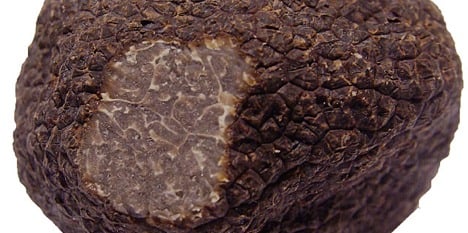The study found that drier summers are reducing the harvest of the Périgord black truffle, one of the world’s most exclusive — and expensive — delicacies, grown in the south of France.
The reduced production of the French truffle, which has shrunk to 25 tonnes a year from as much as 1,000 tonnes a century ago, is linked to drier Mediterranean summers, said scientists from the Swiss Federal Institute for Forest, Snow and Landscape Research (WSL).
The dryness makes it more difficult for truffles, a kind of fungi, to grow on oak and hazlenut trees as they traditionally have done.
However, what is bad news for trufflers in France may be good news for those seeking them in Switzerland, the research team led by WSL’s researchers Ulf Büntgen and Simon Egli said.
“Truffle cultivation in more temperate Central European environments north of the Alps will likely become more important under projected climate change — economically and ecologically,” the scientists said in a report.
They found evidence a general increase in fungi growth in Switzerland, as well as an “unexpectedly rich occurrence of Burgundy truffles” in southern Germany.
The scarcity of the Périgord black truffle has driven its prices as high as 2,000 euros ($2,500) a kilogram, making it one of the most expensive gourmet foods in the world.
So the appearance of more fungal growth in Switzerland lends promise to potentially lucrative new crops for harvesting.
The WSL findings were published as a letter in the current edition of the journal Nature Climate Change.
The reason for the continuous decline in truffle production over the past 40 years years was previously a mystery.
WSL has discovered similar climate changes in Spanish (Aragon and Patagonia) and Italian (Piedmont and Umbria) regions where truffles are also grown.
Climate models predict “incessant Mediterranean summer drying until the end of the 21st century, associated with a continuation of fading Spanish, French and Italian truffle harvests”, the researchers said.
The report concluded that “observed impacts of global climate change are particularly severe across the Mediterranean Basin.”
At the same time, “forest ecosystems north of the Alpine arc still benefit from slightly warmer but not drier conditions, and may even transform into more suitable habitats for both, natural and cultivated truffles.


 Please whitelist us to continue reading.
Please whitelist us to continue reading.
Member comments